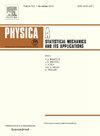Macro guidance-Micro avoidance model for on-site personnel emergency evacuation strategy in nuclear power plants under fear psychology
IF 2.8
3区 物理与天体物理
Q2 PHYSICS, MULTIDISCIPLINARY
Physica A: Statistical Mechanics and its Applications
Pub Date : 2025-02-01
DOI:10.1016/j.physa.2025.130366
引用次数: 0
Abstract
At present, the measures for on-site emergency in nuclear power plants are not universal and flexible, and are not applicable to all accident scenarios. To address the problem, this paper proposes a Macro guidance-Micro avoidance model combined improved Non-dominated Sorting Genetic Algorithm-II (NSGA-II) and Cellular Automata (CA) model for on-site emergency. To overcome the issue of “repeated turnback” in CA micro-simulation, the improved NSGA-II algorithm is introduced to guide macro evacuation directions. For addressing uncertainty in the effects of radiation field, psychological factors, and evacuation behavior on evacuation efficiency in nuclear emergency scenarios, CA is used to simulate and analyze the influence rule of radiation field, herd behavior, information transmission, and physical differences on evacuation time. Finally, by selecting appropriate exit inside nuclear power plant, this model reasonably estimates evacuation time, and ensures timely response of off-site emergency vehicles during the nuclear emergency process. Through the simulation analysis of evacuation process of on-site personnel based on radionuclide diffusion, radiation hazards, crowd characteristics, and psychological changes can be considered, this approach facilitates the planning of safe evacuation exits and allows for more accurate evacuation time estimation, supporting subsequent off-site evacuation efforts.
求助全文
约1分钟内获得全文
求助全文
来源期刊
CiteScore
7.20
自引率
9.10%
发文量
852
审稿时长
6.6 months
期刊介绍:
Physica A: Statistical Mechanics and its Applications
Recognized by the European Physical Society
Physica A publishes research in the field of statistical mechanics and its applications.
Statistical mechanics sets out to explain the behaviour of macroscopic systems by studying the statistical properties of their microscopic constituents.
Applications of the techniques of statistical mechanics are widespread, and include: applications to physical systems such as solids, liquids and gases; applications to chemical and biological systems (colloids, interfaces, complex fluids, polymers and biopolymers, cell physics); and other interdisciplinary applications to for instance biological, economical and sociological systems.

 求助内容:
求助内容: 应助结果提醒方式:
应助结果提醒方式:


